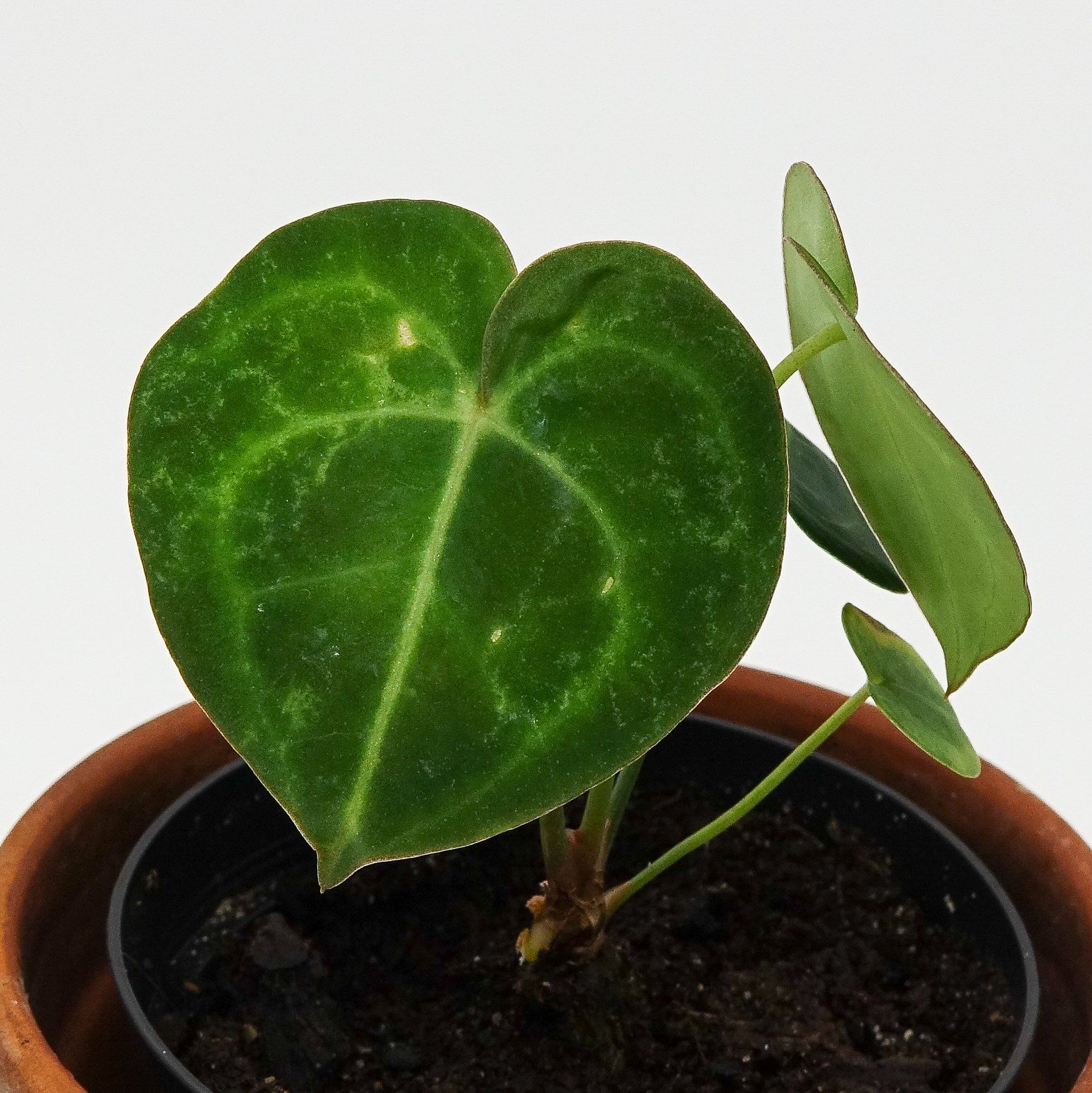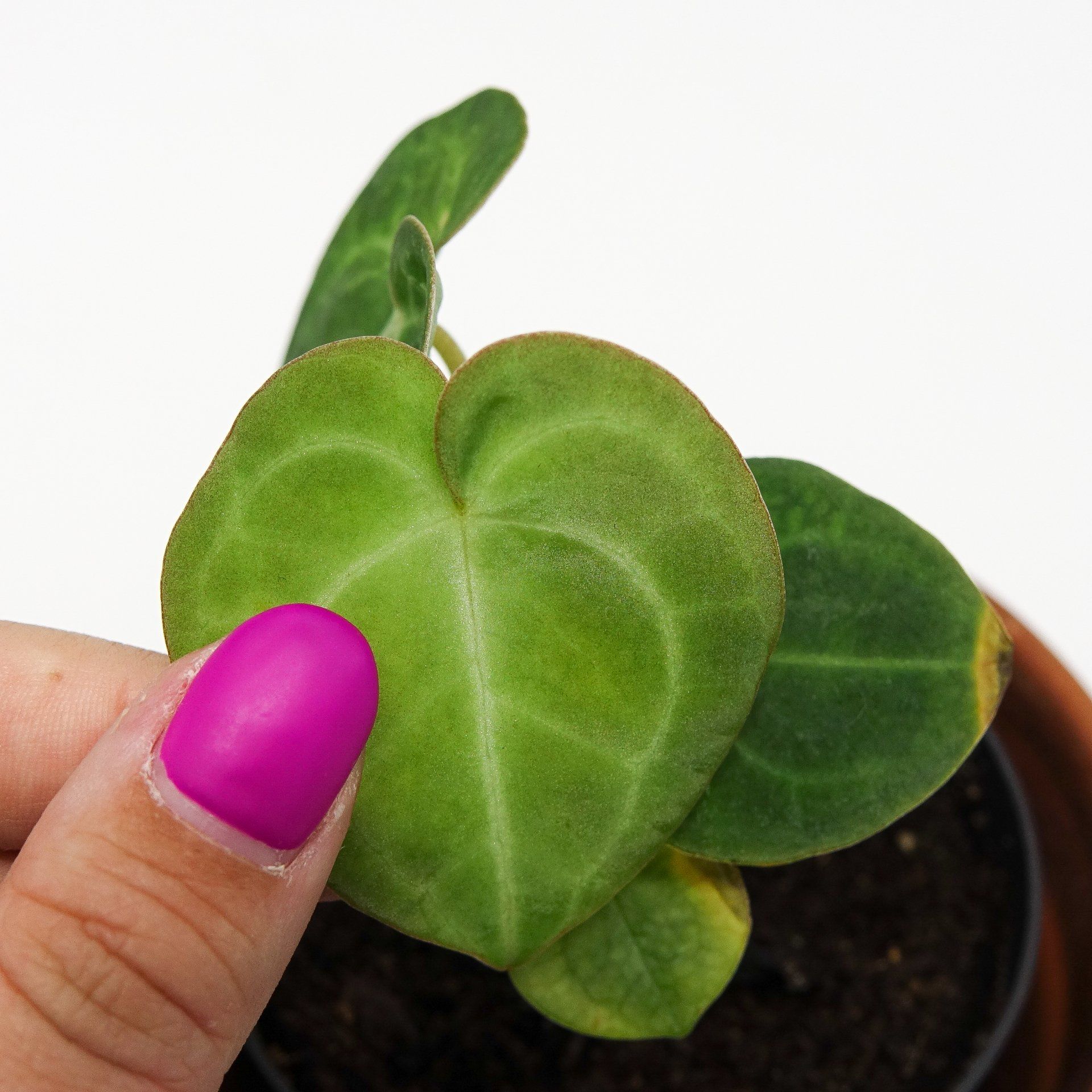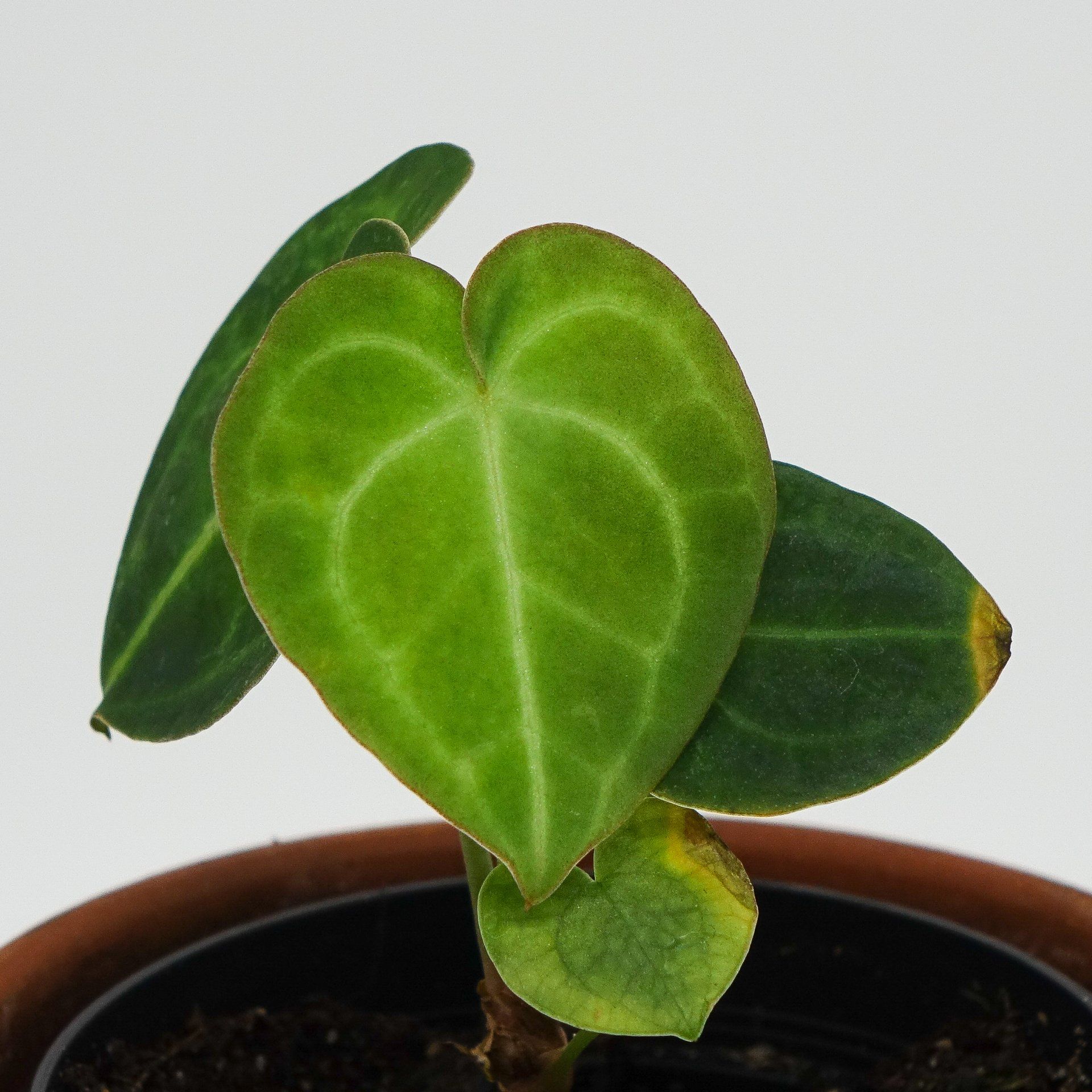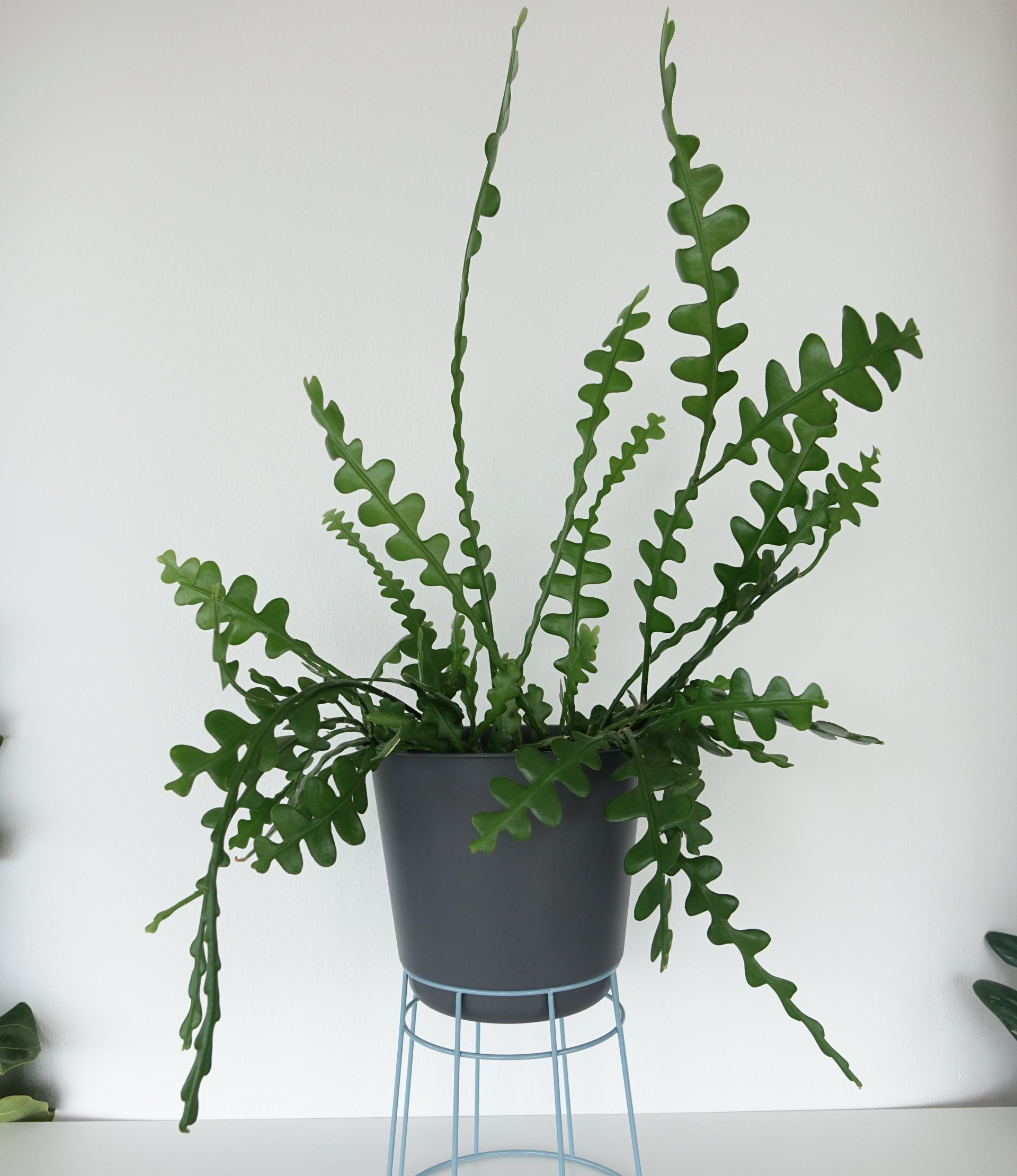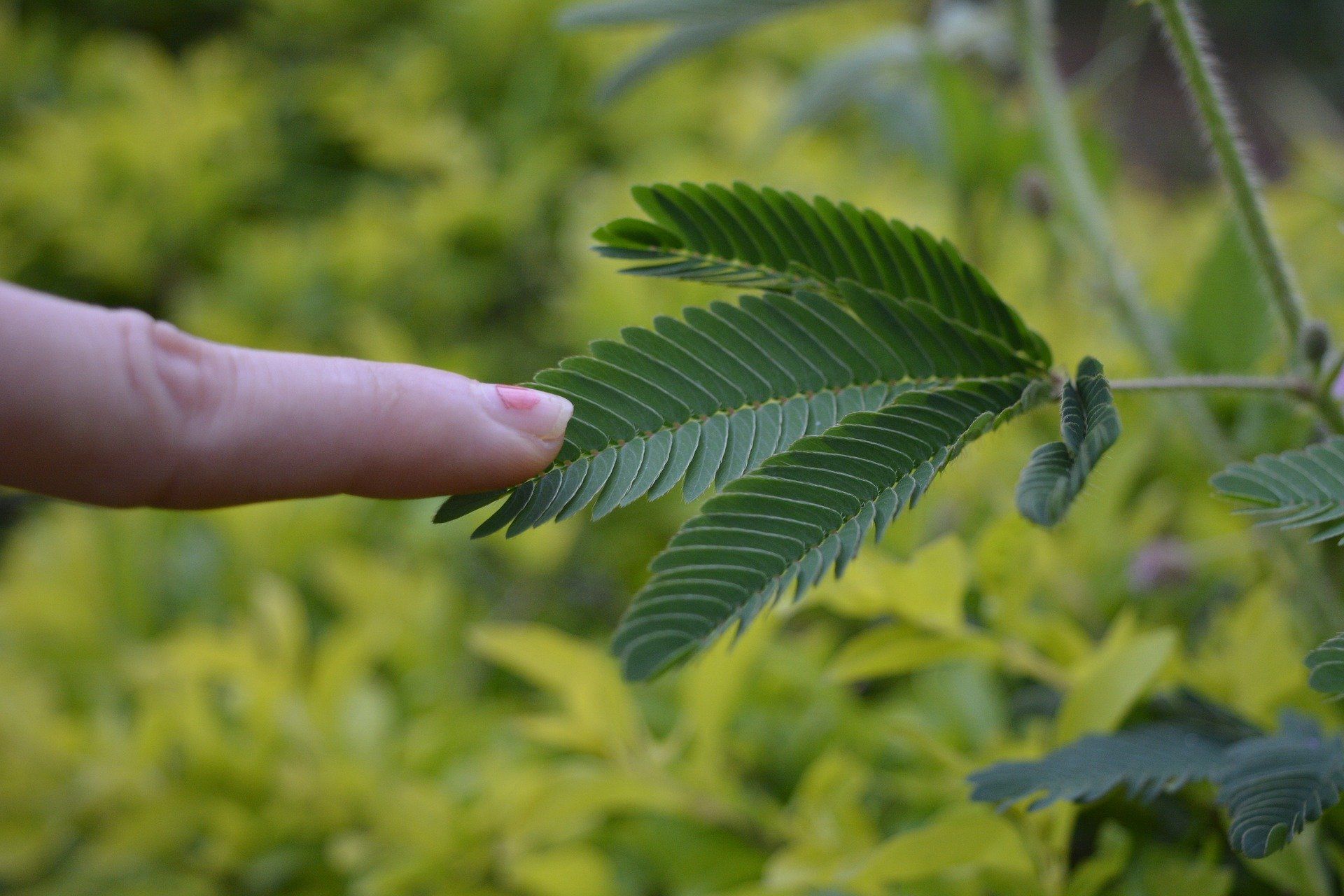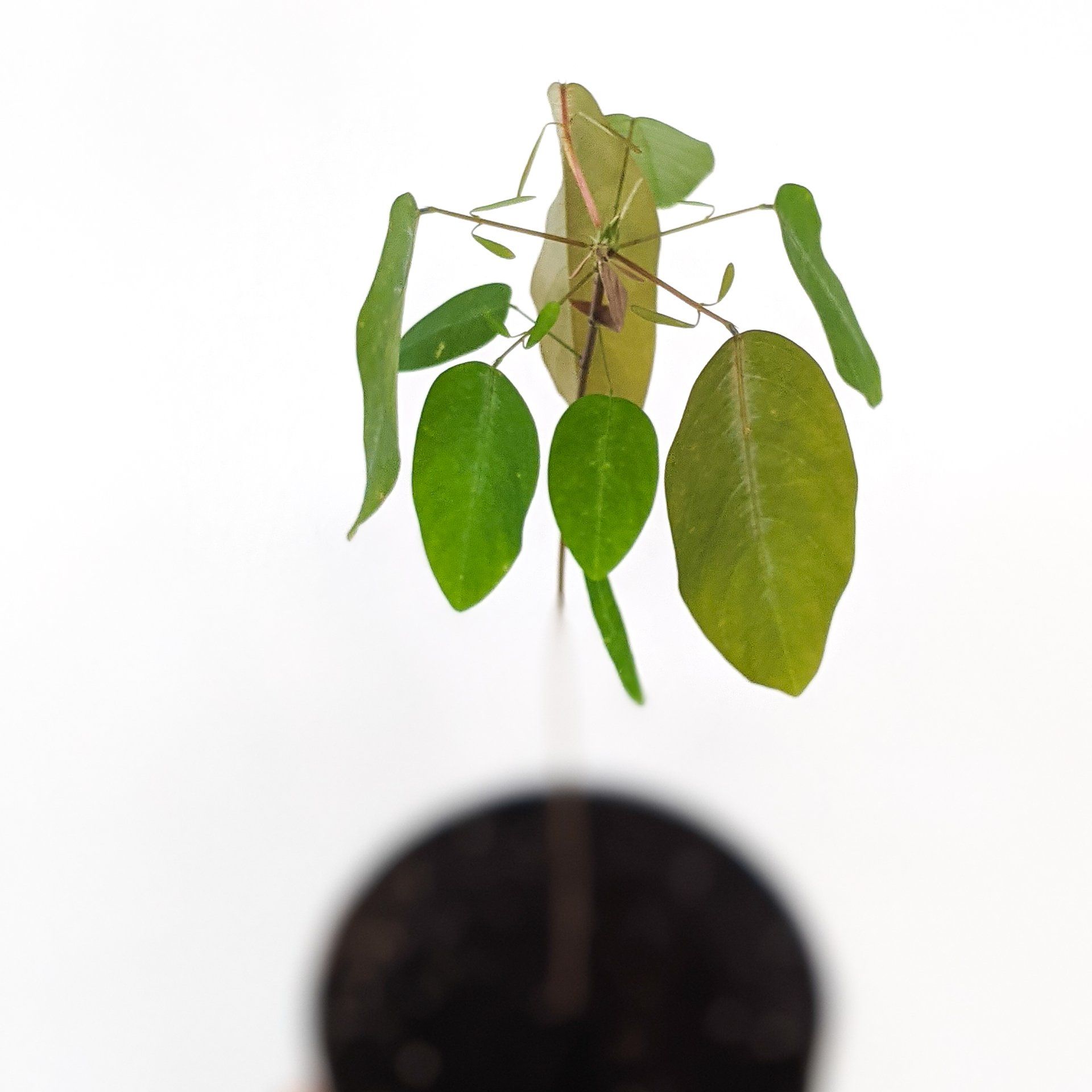Eén zaadje in sphagnum was ontkiemd. Een ander zaadje in vermiculiet had een klein worteltje, maar heeft het helaas niet overleefd.
De vermiculiettray heb ik weggedaan.
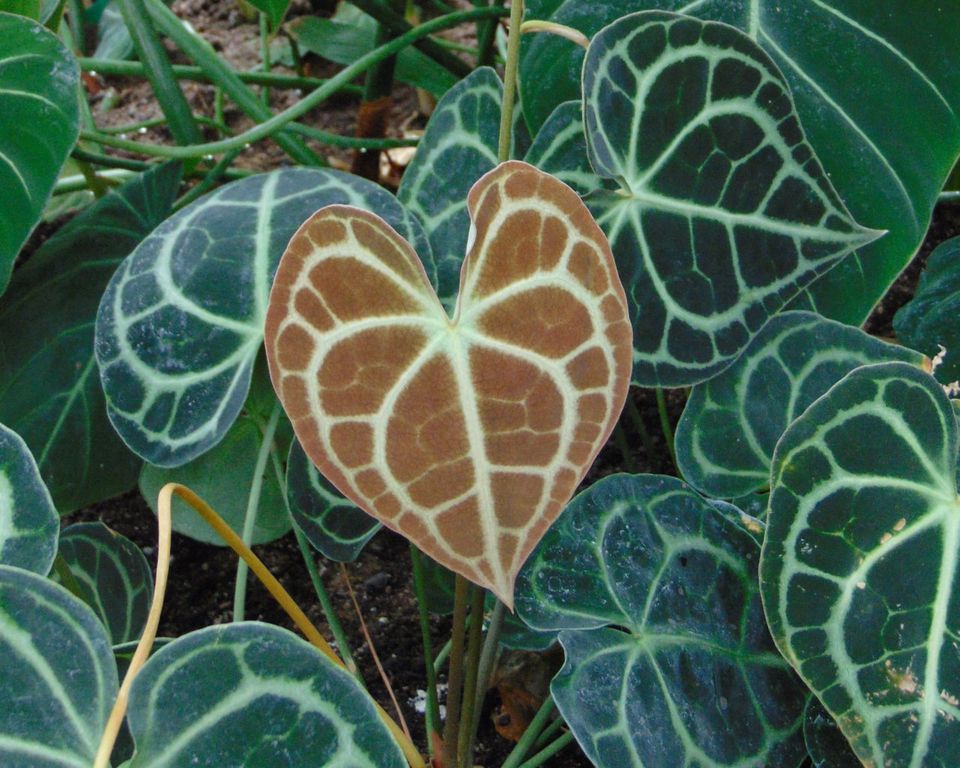
Zaaitray 1: 100% sphagnum
Ik heb 7 zaadjes in het sphagnum laten vallen. Sommige kwamen dieper terecht dan andere :-)
Zaaitray 2: 100% vermiculite.
Ik heb 6 zaadjes heel ondiep begraven, ze waren maar nét bedekt met vermiculiet.
(gedetailleerde informatie in het filmpje hieronder)
Temperatuur: ~24C, bodemverwarming.
Vochtigheid: ze stonden in een kleine broeikas met een vochtigheid van ~85%.
Licht: de zaaitrays stonden onder 2 witte groeilampen.
Mede plant-instagrammer @veryvera_ heeft me de zaadjes toegestuurd. Zij verkoopt ze niet, maar had toevallig zaadjes aan haar moederplant. Zaadjes van A. clarinervium zijn beperkt houdbaar en daarom moeilijk verkrijgbaar.
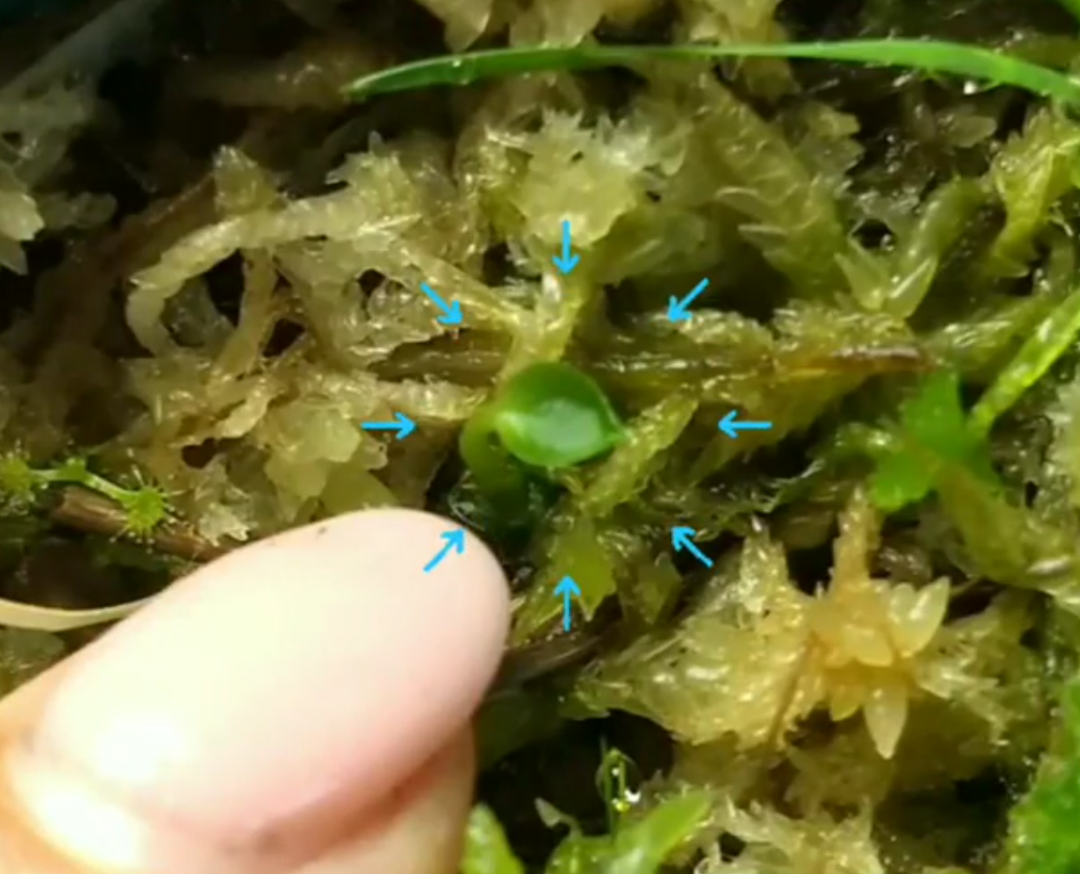
Eén zaadje in sphagnum was ontkiemd. Een ander zaadje in vermiculiet had een klein worteltje, maar heeft het helaas niet overleefd.
De vermiculiettray heb ik weggedaan.
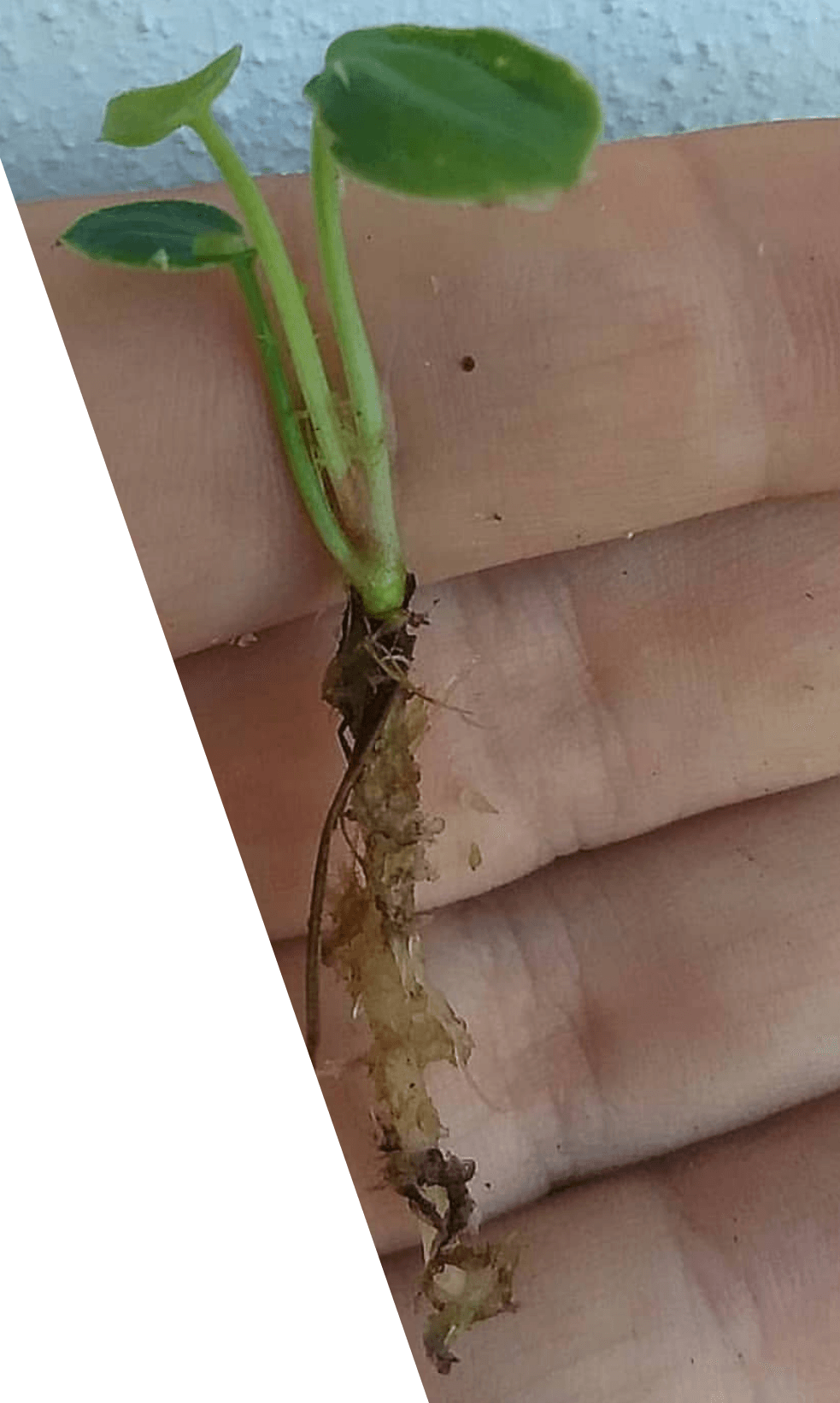
Er was niks meer ontkiemd. De zaailing had ondertussen 4 gezonde blaadjes. Ik besloot het te verpotten in een mix van sphagnum en kokosvezel en terug te zetten in de warme, vochtige broeikas.
Je ziet dat ie al best flinke wortels had!
